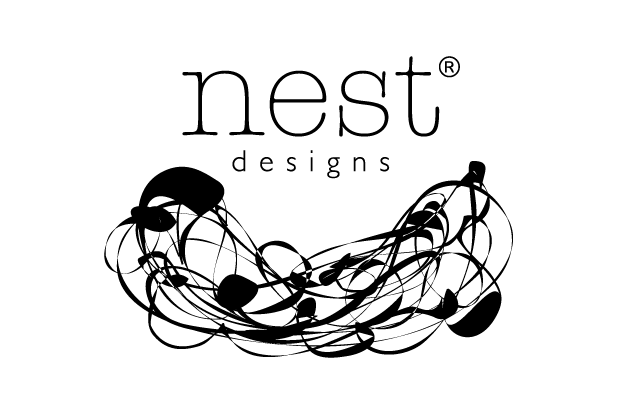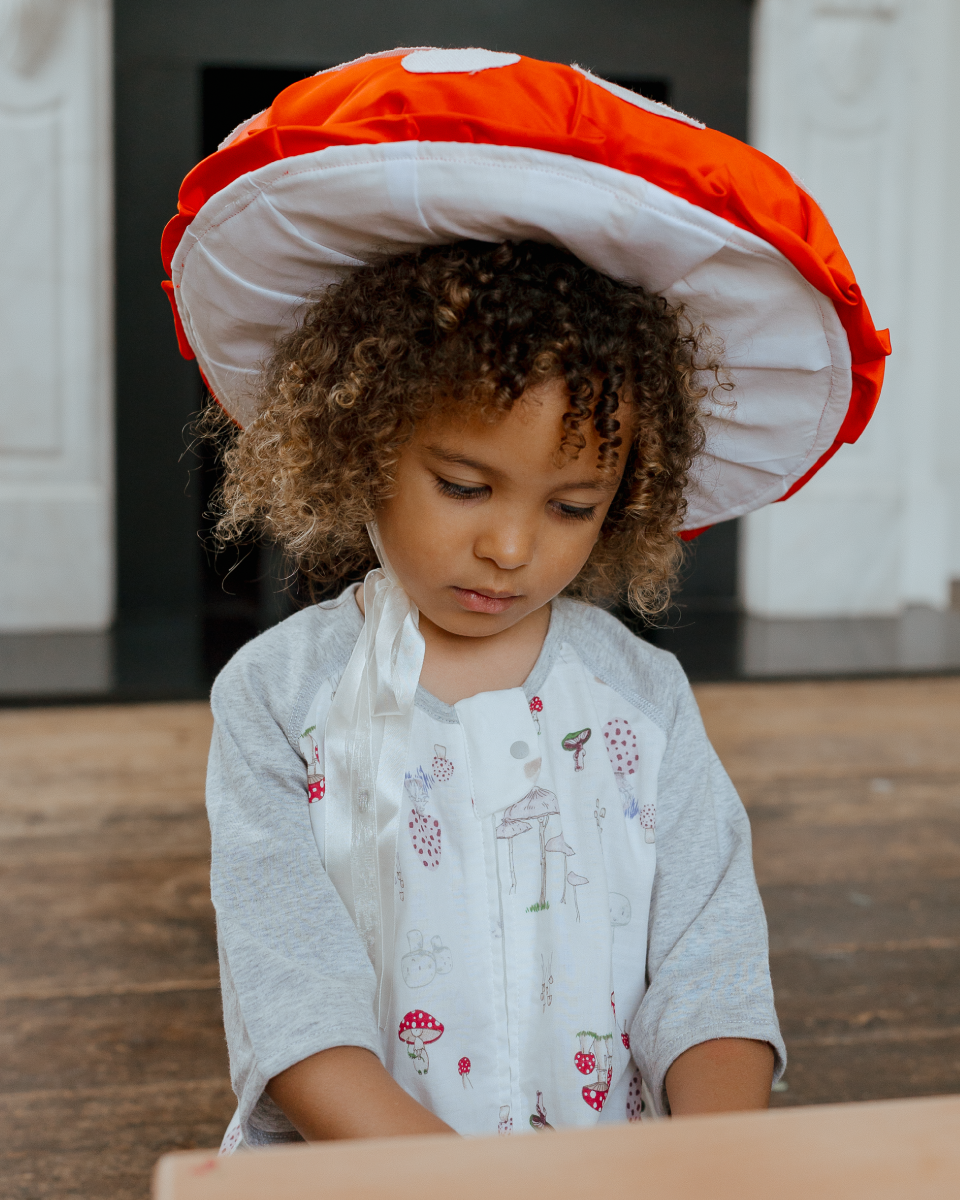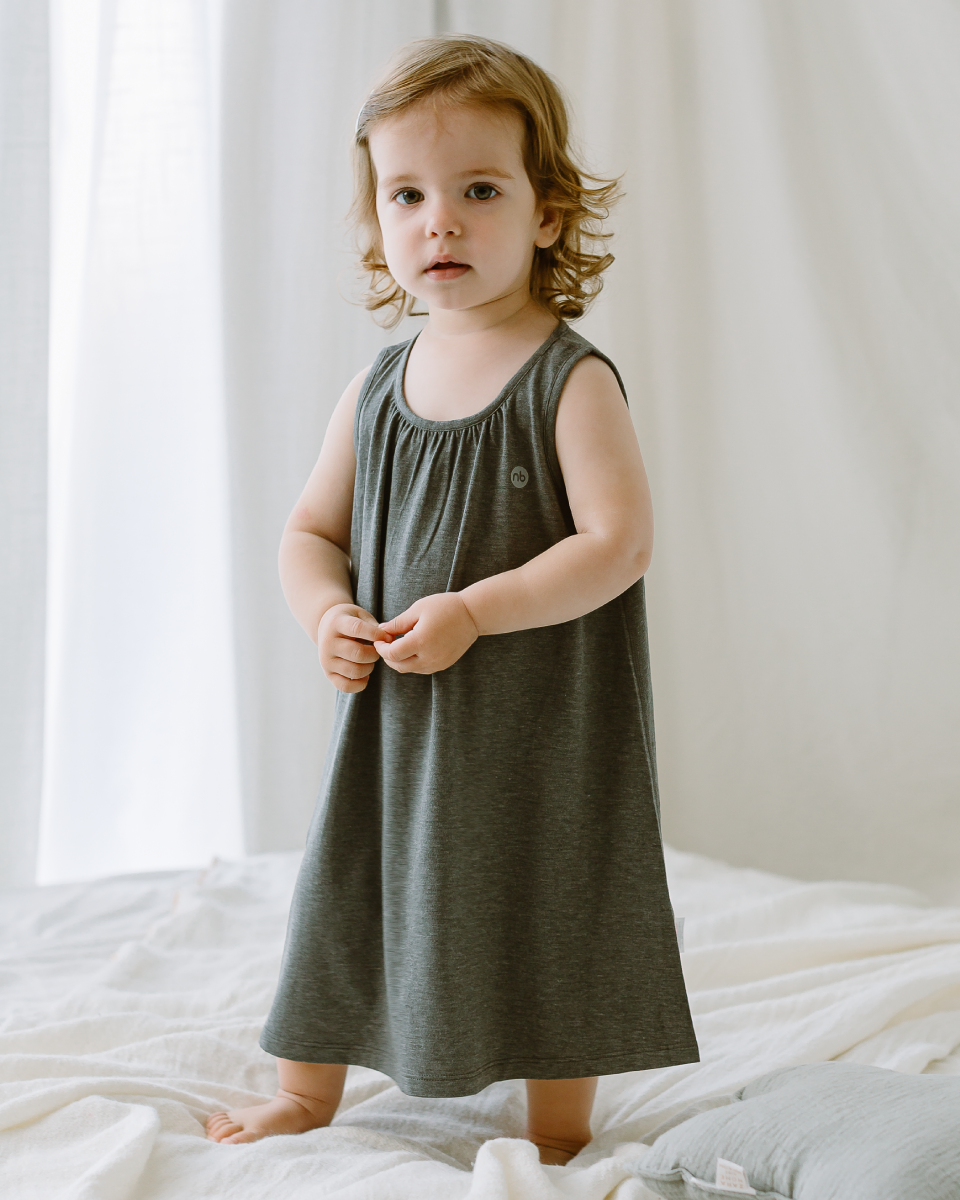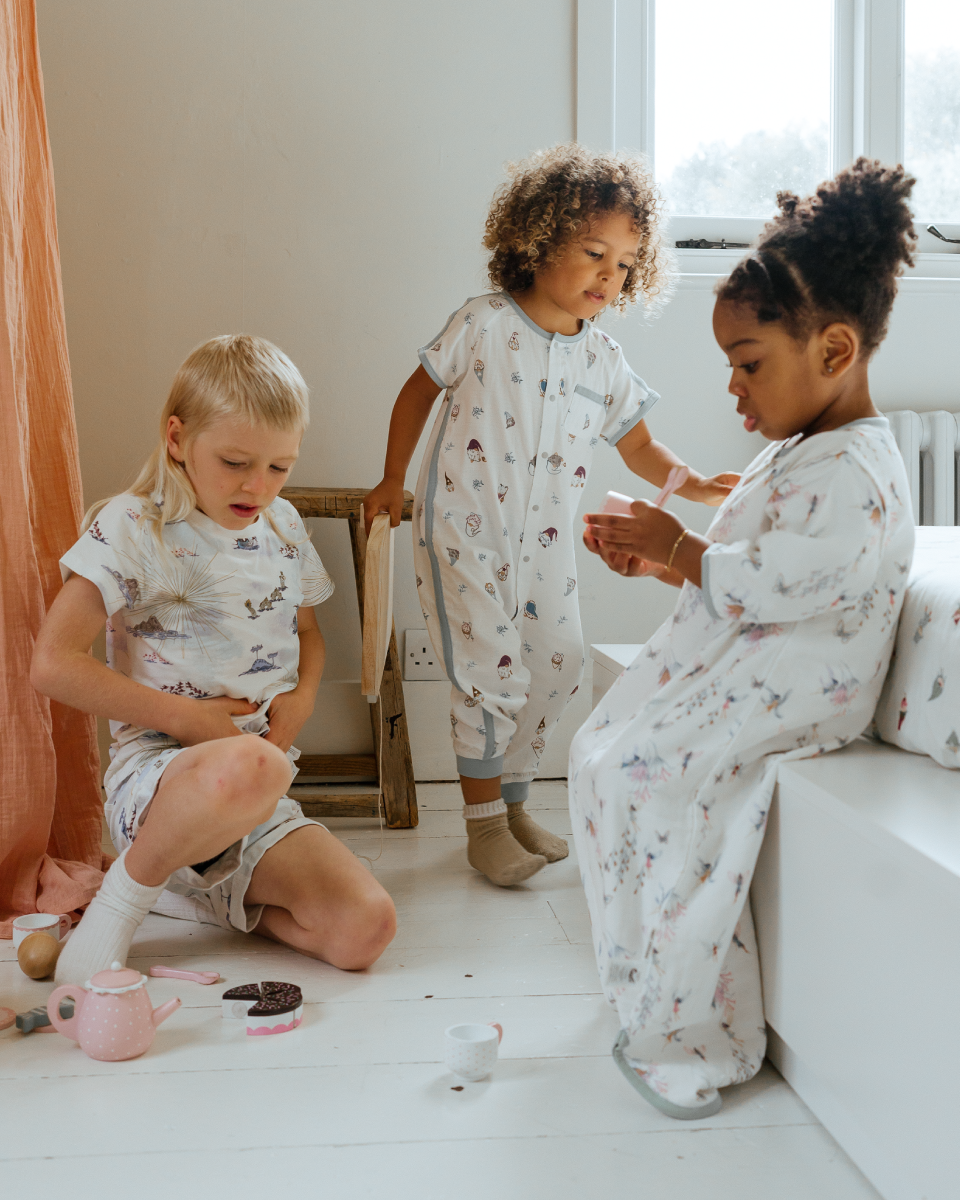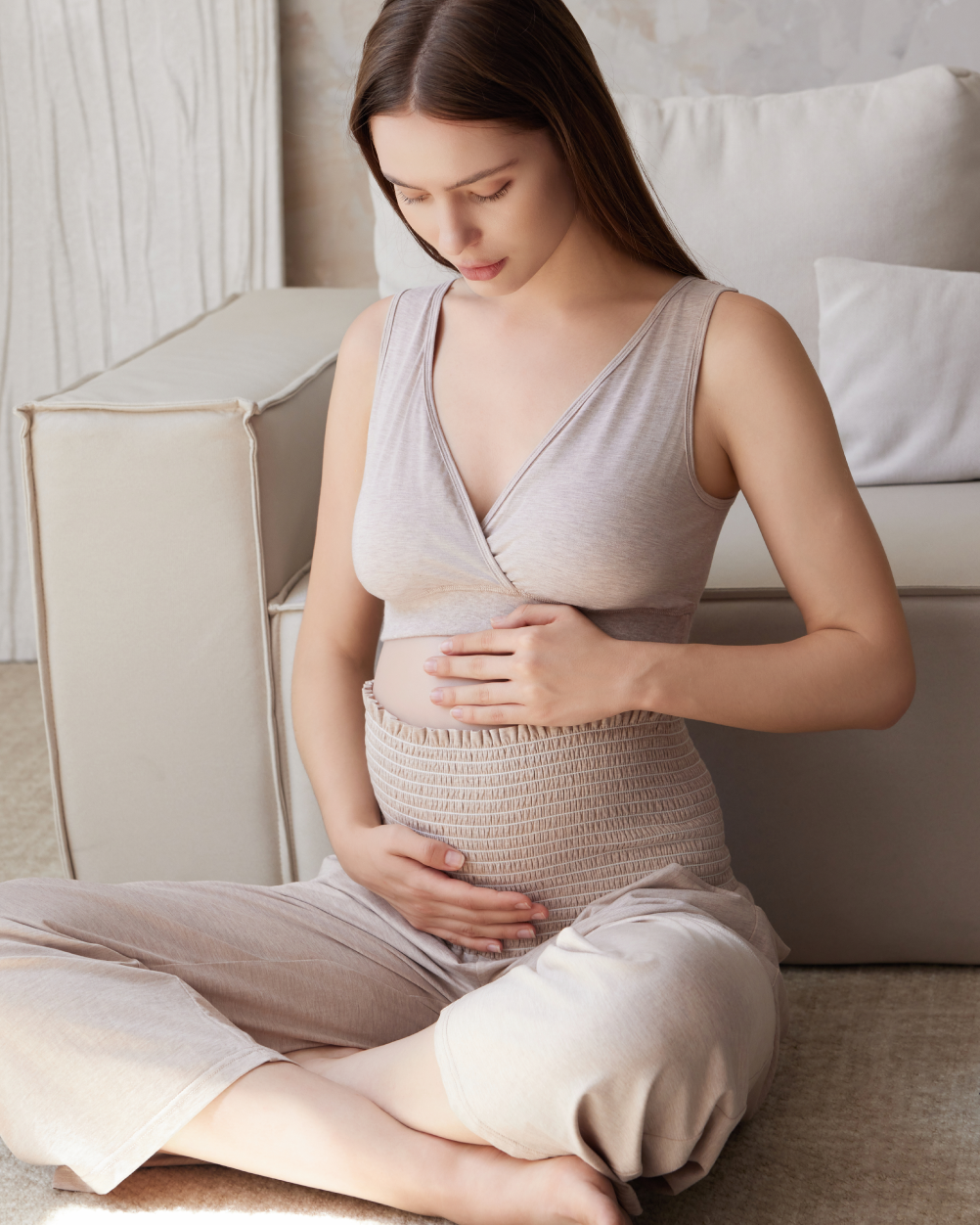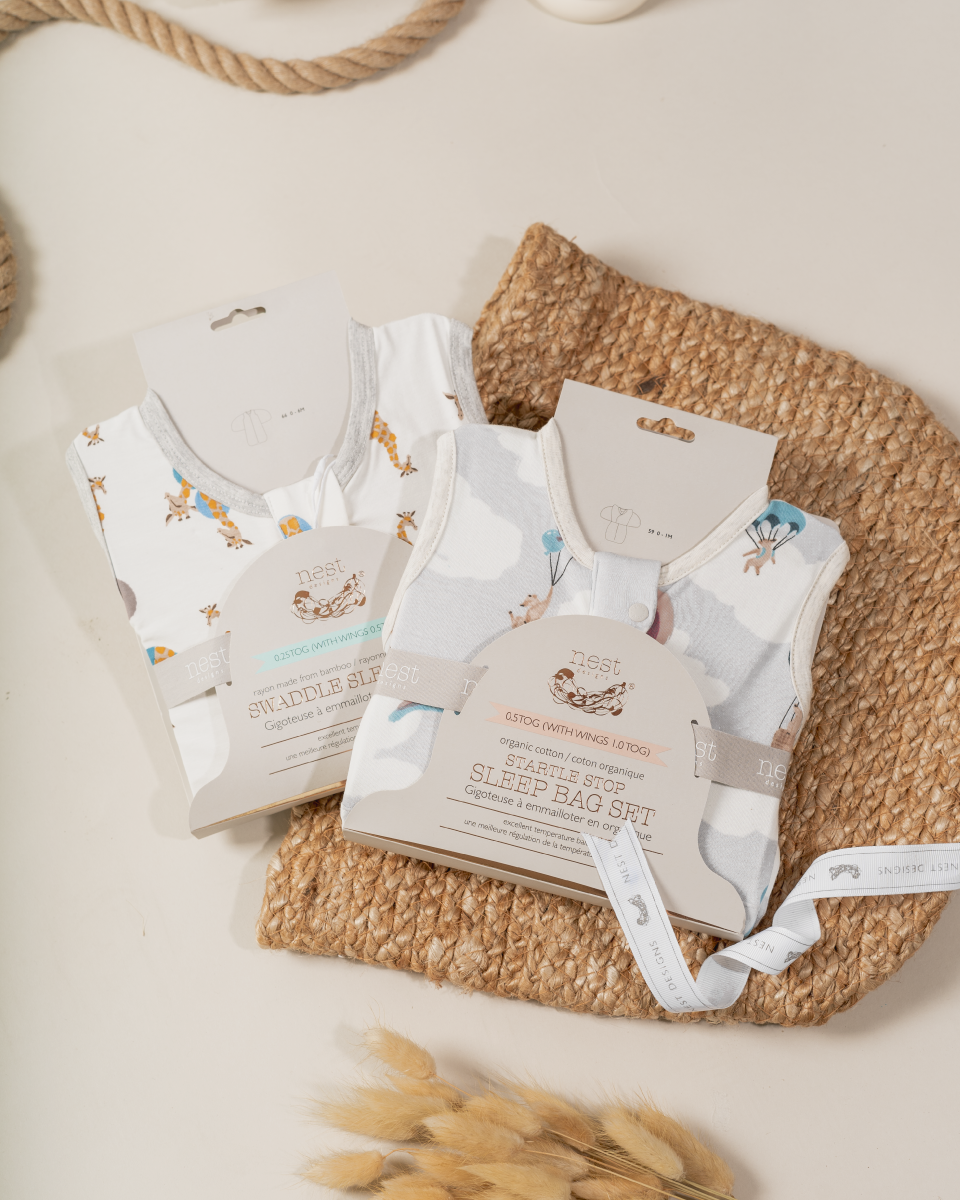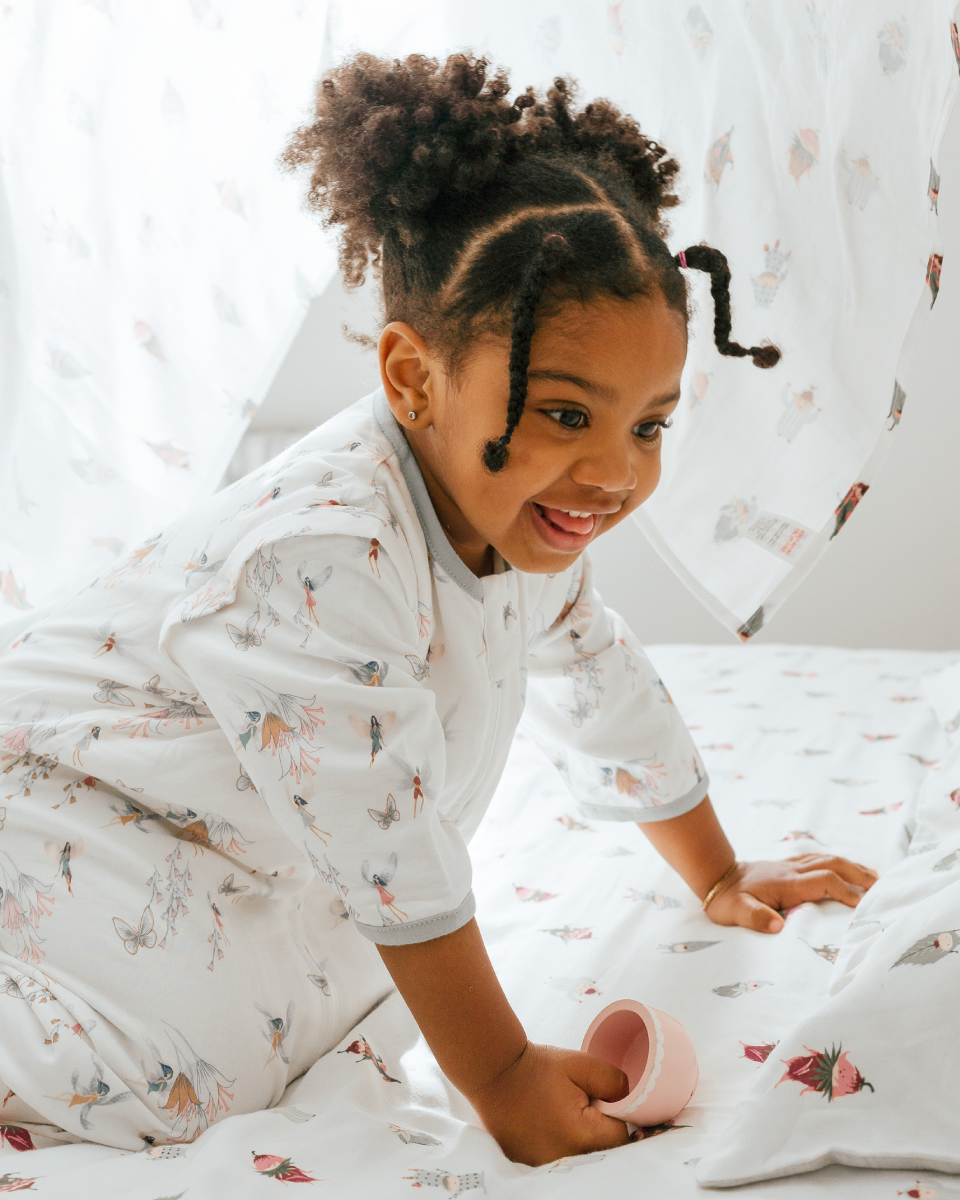![When to start wearing maternity clothes? [The Ultimate Guide]](http://www.nestdesigns.com/cdn/shop/articles/MC-B-bnr_1445x.jpg?v=1708970106)
Pregnancy is an incredible journey full of beautiful changes—the least of which is your changing body that shifts to accommodate your growing baby. New moms often wear regular clothing in the first trimester but likely wonder when to start wearing maternity clothing. You can begin wearing pregnancy clothes when it feels right for you.
What week do you start wearing maternity clothes?
Many mothers-to-be contemplate transitioning to maternity wear around the second trimester, typically between 12 and 16 weeks. Regular clothes may feel too snug for comfort as your precious baby bump grows.
It's important to emphasize that every body and pregnancy is unique. Expecting moms should start wearing maternity clothes based on their preferences and needs. Indicators that it's time to buy maternity wear can be when clothes start to feel restrictive or uncomfortable, or your bump becomes more prominent.

Is the first trimester too early to wear maternity clothes?
The first trimester encompasses weeks 1 to 12 of pregnancy; it's generally too early for most women to need maternity clothes. During this time, your body is still adjusting to the changes of early pregnancy, and your bump typically hasn't emerged enough to require maternity clothing.
However, some expecting moms may start wearing maternity clothes in their first trimester for comfort reasons, especially if they experience bloating or if their regular clothes feel too tight. Ultimately, you should prioritize your comfort in pregnancy, but if you shop early, choose maternity wear that will accommodate your growing baby into the second or third trimester.
Can you wear regular clothes while pregnant?
Many pregnant women wear regular clothes as long as possible, especially in the early stages when their bodies may not have changed too much.
Some women find that certain styles of regular clothing, such as loose-fitting tops, stretchy leggings, or certain dresses, can accommodate their growing belly comfortably for many months of pregnancy (and sometimes throughout the entire pregnancy).
However, as your sweet baby bump becomes more pronounced, regular clothes may no longer fit properly. When this happens, it's an excellent time to transition to fashionable maternity clothing designed to accommodate your changing shape and provide the comfort and support you need.

Do you buy your normal size in maternity clothes?
If you have never purchased maternity clothing, sizing is a big question. Generally, maternity sizes are often based on your pre-pregnancy size. If you wear a size 8 in regular clothes, you're likely the same size in maternity clothes.
Maternity clothing tends to feature stretchy fabrics and/or adjustable waistbands to accommodate your growing bump.
Every woman's body changes differently during pregnancy, so you may need to adjust the sizing based on your personal comfort and fit preferences. Some women may size up for added comfort, while others may find their regular size in pregnancy wear just fine. The best way to decide which size works best is to try on maternity clothing before taking the tags off.
Why are tight clothes not recommended during pregnancy?
Tight clothes are generally not recommended during pregnancy. There are a few reasons why you should avoid tight clothing:
- It restricts blood flow. Tight clothing, especially around the waist, can restrict blood flow to you and your baby.
- It can be uncomfortable. Tight clothing may rub against your skin, causing irritation, chafing, and discomfort. If it's too tight, it also limits your range of motion, especially as your bump grows.
- It can make you feel unwell. Tight clothes, especially around the midsection, can contribute to acid reflux, heartburn, and indigestion. Too-snug attire puts increased pressure on blood vessels, which may promote the development of varicose veins and hemorrhoids.
- It increases your risk of infections. Tight clothing can trap moisture and heat against your skin, creating an environment that encourages bacterial growth and fungal infections (like yeast infections).
How Can I Dress for Work During Pregnancy?
Some workplaces have a strict dress code that you need to follow, even with a baby bump. Maternity work clothes can still look sharp and feel comfortable with these tips:
- Invest in versatile maternity basics, such as pants, tops, and maternity dresses. You can style these foundational pieces with other garments or accessories.
- Add a cardigan or blazer to maternity basics for a professional polish.
- Choose stretchy fabrics, like jersey, that accommodate your changing shape.
- Look for clothing with adjustable waistbands or drawstrings that you can adjust throughout your pregnancy.
- Remember to choose supportive footwear. Low-heeled shoes or flats with insoles can reduce strain and help you get through the workday comfortably.
- Dress in a way that makes you feel confident. How you feel transcends your wardrobe; if you feel good, it helps you look good, too.

How much maternity clothing should you buy?
Knowing how much maternity clothing to purchase can seem challenging. Cute maternity clothes can help you feel like yourself, and the number of pieces you need depends on your preferences. Some moms-to-be have a capsule wardrobe, and others invest in more pieces. There's no right or wrong answer to how much maternity clothing to buy.
It can be helpful to look at your existing wardrobe and see which items you can wear throughout pregnancy. You can start shopping for pregnancy clothes based on the gaps in your current wardrobe.
Invest in versatile maternity basics like jeans, tops, and dresses that can be mixed and matched. Buy maternity clothing gradually as your body changes, focusing on essentials and adding pieces as needed.
As a baseline, aim for around 5–7 versatile tops, 2–4 pairs of maternity bottoms (such as jeans, leggings, or skirts), 2–3 dresses, and a few comfortable maternity bras and underwear.
Read our article, What Maternity Clothing Essentials Do I Need?, to help you make your maternity clothing shopping list.
What are the types of maternity clothing?
During pregnancy, your body changes in many ways, and there are all types of maternity clothing to accommodate these shifts:
- Nursing bras provide comfortable and convenient access for breastfeeding. They typically feature adjustable straps, easy-open nursing clips, and soft, stretchy fabrics.
- Maternity and nursing tops accommodate your growing belly during pregnancy and provide easy access for breastfeeding. Maternity and nursing tops often feature empire waistlines, stretchy fabrics, and discreet openings or panels.
- Maternity t-shirts have extra length and stretch. They come in various styles and are made from soft, breathable fabrics for maximum comfort.
- Maternity tank tops are an absolute dream in warm weather. They offer lightweight and breathable coverage, using stretchy fabrics and extra length to cover your bump. Some can also function as nursing tops, with front panels that easily clip on and off when you need access.
- Maternity and nursing dresses flatter your changing body shape throughout pregnancy while providing comfort and style. They come in several styles and may have features like stretchy fabrics and hidden nursing openings.
- Maternity rompers have a relaxed fit and adjustable waistband, making them some of the cutest maternity outfits (in our opinion).
- Maternity pants have stretchy waistbands or adjustable panels to keep you comfy as your baby grows. These pants come in styles like jeans, trousers, leggings, and more.
- Maternity joggers are another comfortable and stylish pants option for casual wear during pregnancy. They feature a slim-fitting silhouette, elasticized waistbands, stretchy fabrics, and a cinched ankle design.
- Maternity shorts have stretchy waistbands and extra room for your growing baby bump. They come in various lengths to keep you fashionable, cool, and comfortable in warm weather.

What Fabrics are Comfortable During Pregnancy?
During pregnancy, prioritizing comfort is essential; choosing the right fabrics is an excellent place to start. Some premium fabrics to consider during pregnancy are:
- Cotton: This breathable and soft fabric is healthy and gentle on the skin. It allows for airflow and helps to keep you cool and comfortable. Organic cotton is even better, as it’s made without harmful toxins, so it’s better for you, your little ones, and the planet.
- Bamboo: A soft, hypoallergenic, and eco-friendly fabric, bamboo's comfort is hard to top. This material has natural moisture-wicking and antibacterial properties, which help to keep you feeling fresh and comfortable all day.
- Jersey: This stretchy knit fabric is known for its comfort and flexibility. It has a smooth texture, and it stretches to accommodate your growing belly while retaining its shape and providing support.
- Spandex: This synthetic fibre has exceptional stretch and recovery properties. It is often blended with other fabrics like cotton or polyester to add flexibility and a supportive fit to maternity clothing.
At Nest Designs, we are known for oh-so-soft, eco-friendly, and responsibly sourced fabrics. Learn more about our fabrics here.
What maternity clothes do you wear for sleep?
For comfortable sleep during pregnancy, choose loose-fitting maternity nightgowns, PJ sets, or lounge dresses made from soft, breathable fabrics like cotton. You may also feel more comfortable with a supportive sleep bra. Some women wear a maternity robe before bed and during lounge-about mornings for extra warmth.
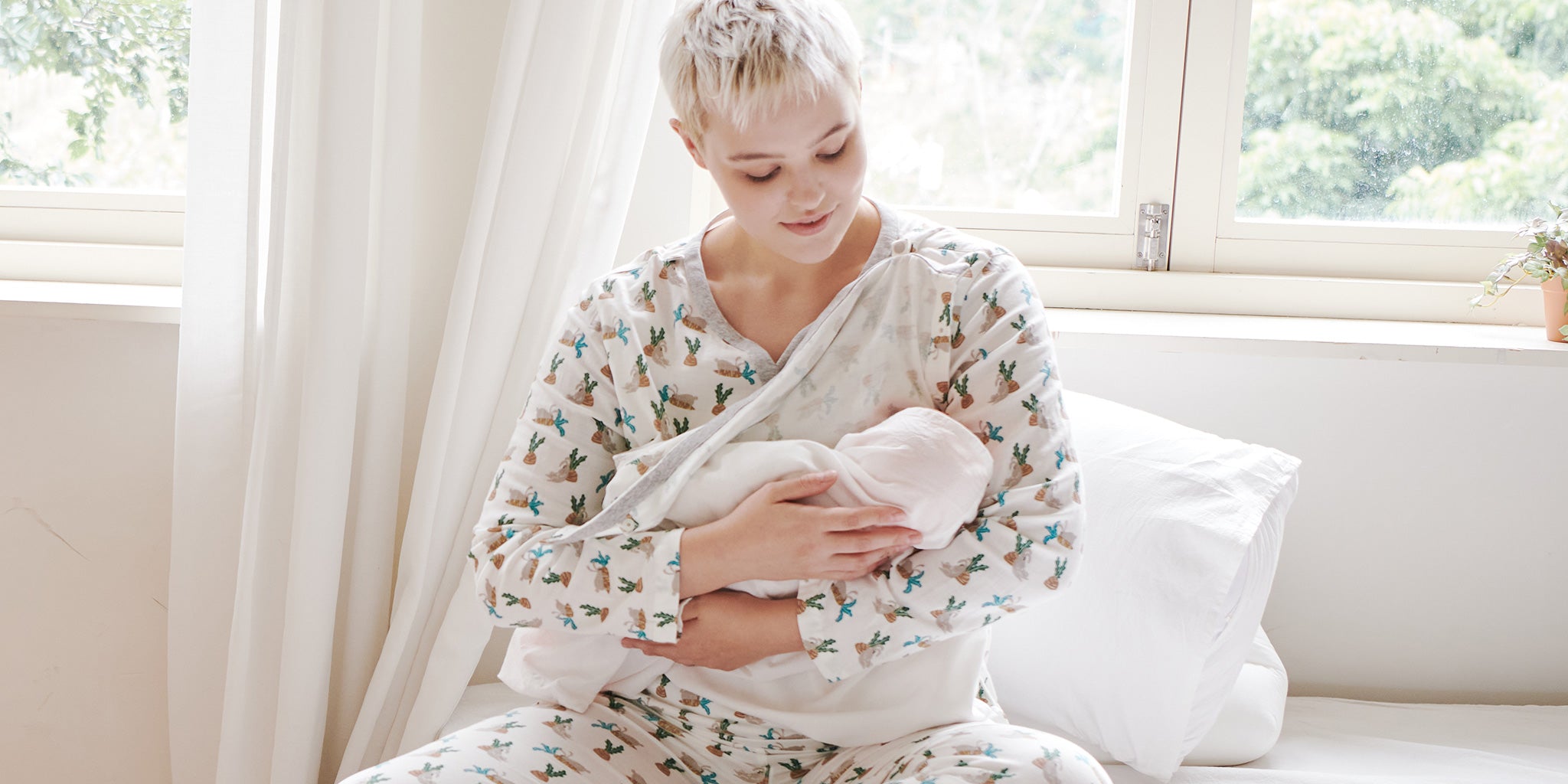
Do you wear maternity clothes after birth/postpartum?
After giving birth, many women continue to wear maternity clothes postpartum. You've spent nine months growing your baby, creating temporary changes in your body size and shape. Maternity clothes provide comfort, gentle support for the abdomen, and convenience for breastfeeding.
Tips for how to buy maternity clothes
Shopping for maternity clothes is exciting. There are so many cute maternity outfits out there. When shopping, look for pieces that fit well, flatter your changing body, and meet your comfort needs.
Here are some tips to help you navigate the process:
- Start with maternity basics, such as everyday pants, versatile tops, and dresses. Mix and match these pieces to create a variety of outfits for different occasions.
- Prioritize comfort and look for soft, breathable fabrics with stretch and give, like cotton, bamboo, and jersey.
- Look for adjustable waistbands and stretchy panels that accommodate your growing belly and provide flexibility and support.
- Consider your lifestyle when selecting maternity clothes. You may need to invest in a few work-appropriate pieces, or if you're more casual, choose comfortable, everyday loungewear.
- Size up when you need to. Most maternity clothes accommodate your changing body shape, so you can often buy your pre-pregnancy size. However, as your baby bump grows, you may need to size up certain items.
- Try before you buy: Whenever possible, try on maternity clothes to check the fit, feel the fabric, see how it looks, and experience how the garment moves with your body.
- Invest in maternity undergarments. Supportive maternity bras and underwear can make a big difference in how your clothes fit and feel.
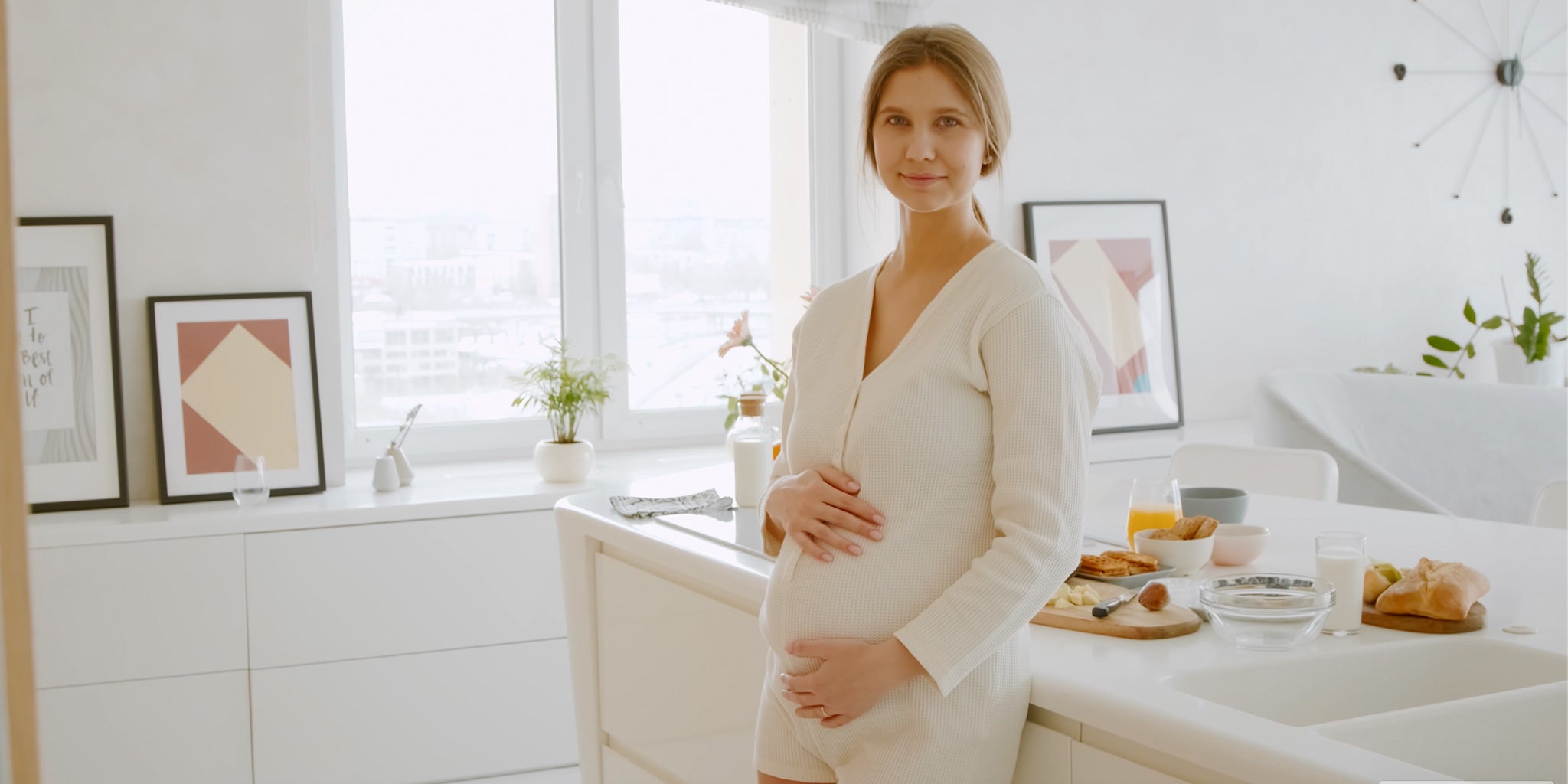
How Do I Care for Maternity Clothes?
To help your maternity wear last long term, wash them according to the care labels. Following these instructions keeps them in good condition so you can wear them in future pregnancies or pass them along to somebody else who will love these clothes as much as you.
Here is some advice to increase the longevity of your maternity clothing:
- Wash like colours together to prevent bleeding.
- Choose mild or gentle detergent for delicate fabrics.
- Wash maternity clothes in cold water to preserve their colour.
- Dry on low heat or air dry to prevent shrinkage.
- Iron on low heat and inside out if necessary.
- Fold clothes and store them in a clean, dry area to maintain shape.
Stylish Comfort and Sustainability Through Pregnancy
Maternity clothing that makes you feel beautiful and comfortable can enhance your lovely pregnancy glow. Ever-so-soft, healthy fabrics in styles that make you feel confident help you feel loved and cared for prepartum and postpartum.
Whether you embrace maternity clothing early on for comfort or wait until your baby bump becomes more prominent, Our Nest Bump collection of sustainable and sweet styles are an excellent maternity staple.


